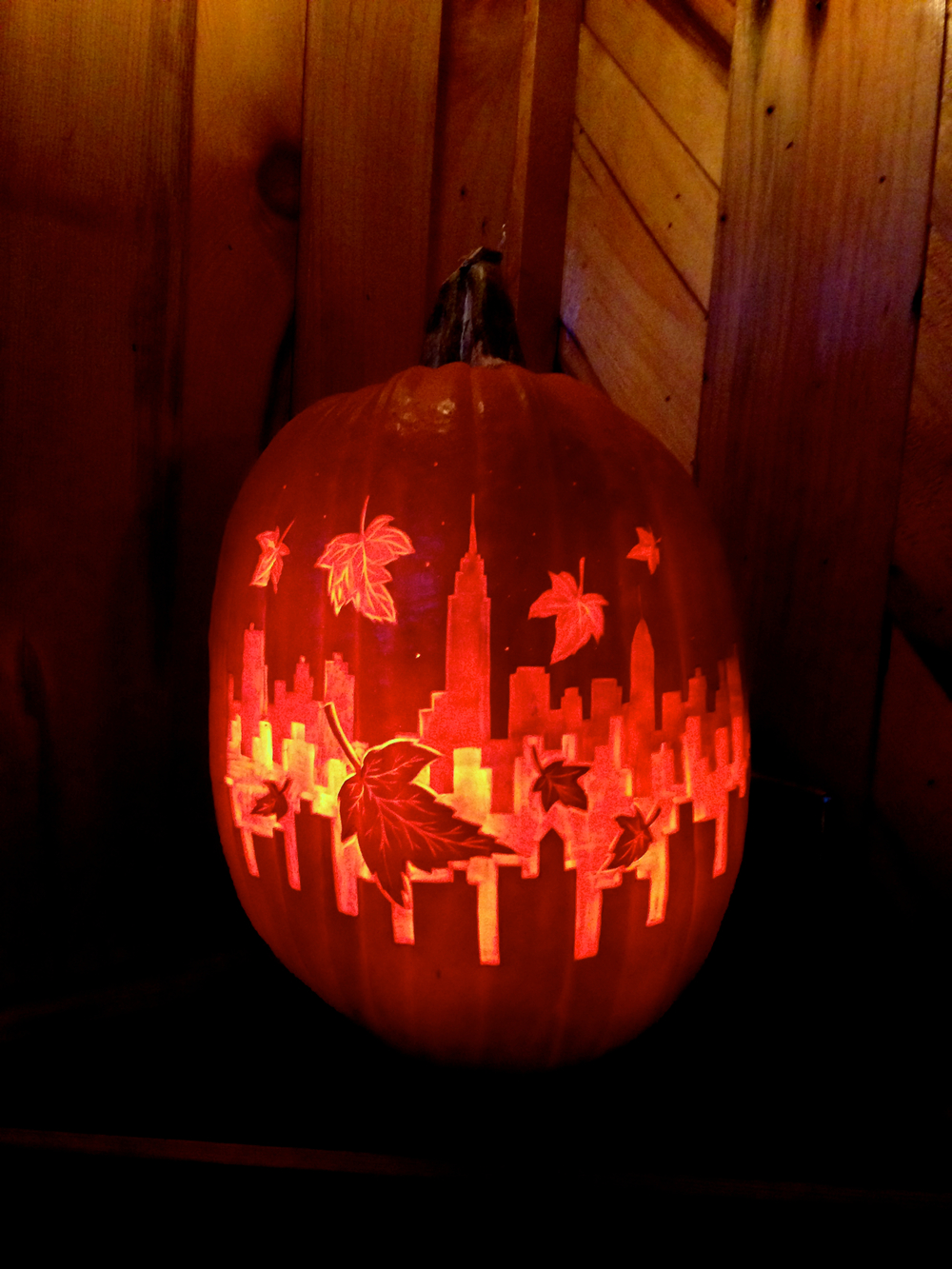
CARVING THE PERFECT PUMPKIN
Some sculptors use clay. Others stone, or wood. Marc Evan’s medium is pumpkin. He’s been collaborating with Chris Soria for the past 20 years and together they founded Maniac Pumpkin Carvers (maniacpumpkincarvers.com) in Brooklyn, NY. They have since elevated pumpkin carving from a hobby craft to an art form. Their work has been featured nationally, including The Tonight Show with Jimmy Fallon. Here is Evan in his own words on perfecting the basic—and the not-so-basic—for a truly unique Halloween. After you read these tips, check the Maniac site for ideas and instructional videos (tools will be available soon). Or, if you want something world-class without the trouble of doing it yourself, order a custom design from Maniac and have it shipped anywhere in the US.
“The first thing you should do is sketch out ideas. It doesn’t have to be a detailed drawing, it could just be a doodle, or a thumbnail sketch. But you should have some kind of plan before you start carving into the pumpkin. Keep that with you as you get to work. We always like to have reference pictures printed out or available on a device as we work so we have some inspiration to go from.”
“We work with a variety of techniques. We’re really fond of classic jack-o-lanterns. We’re also known for elaborate etchings that allows light to pass through. The other is the full sculptural style. For jack-o-lanterns and etchings, you hollow out the pumpkin. For a sculpture, you don’t touch the inside.”
“When you sculpt you’re using subtractive methods. It’s more similar to wood carving or stone carving than working with clay. You’re removing flesh from the pumpkin to reveal a sculpture, so you need to choose a pumpkin with a thick rind or skin. The best tip for that is to pick a pumpkin that is heavy for its size. You don’t want it to feel very hollow. Smaller and heavier is better than bigger and light. If it’s light it’s not good for sculpting. The subtractive method means you have to mentally plan out what the extremities are— which areas will protrude the most, like a nose on a face—because you want to preserve those elements.”
“The great challenge with sculpting on pumpkin is that no matter how thick the rind, they are hollow on the inside. Bursting through to the center is always a concern. The way to avoid that is to go slow; as the material gets stringier or the texture starts to change, you know you have to ease back a bit. Push gently on the surface; as you get close to the surface there will be more give.”
“The pumpkins that are best for sculpting are not the picture-perfect round pumpkins that are good for jack-o-lanterns. Take a pumpkin that is oblong, misshapen, or has odd features can lend itself really well to creating a character in a pumpkin. You can use the imperfections sometimes to really great effect.”
“Our favorite tools for sculpting are a combination of woodworking and clay sculpting tools, using a lot of ribbon tools common to clay sculpting, plus gouges and chisels common to wood carving.”
“For jack-o-lanterns and etches, you want to start with a pumpkin that’s been emptied really well. Take the extra time to remove as much of the pulpy, stringy material from the inside surface as you can. You want as smooth and as dry a pumpkin as possible.
“Practice doesn’t make perfect, but it definitely makes you better and more confident. Having a few pumpkins handy so you don’t feel so precious about it and afraid to make a mistake is a good idea. It should be a fun, festive event. It’s great to create a work of art, but the root of it should be embrace the holiday. Halloween is such a pop culture celebration. Have fun, get your hands dirty, and enjoy the process.”
Originally published in Robert Irvine Magazine.

